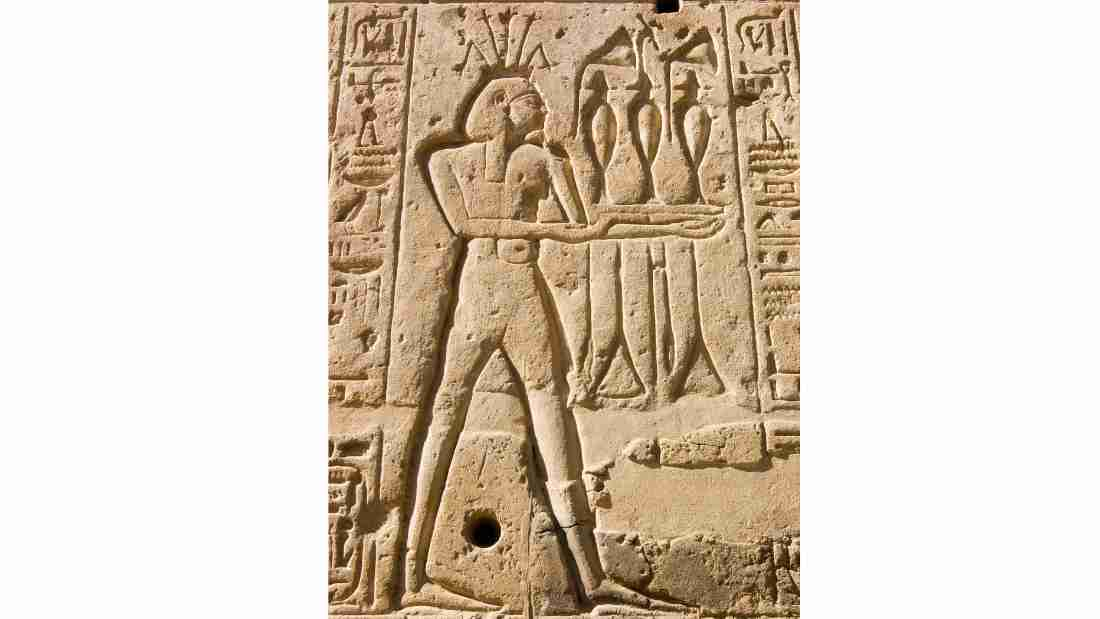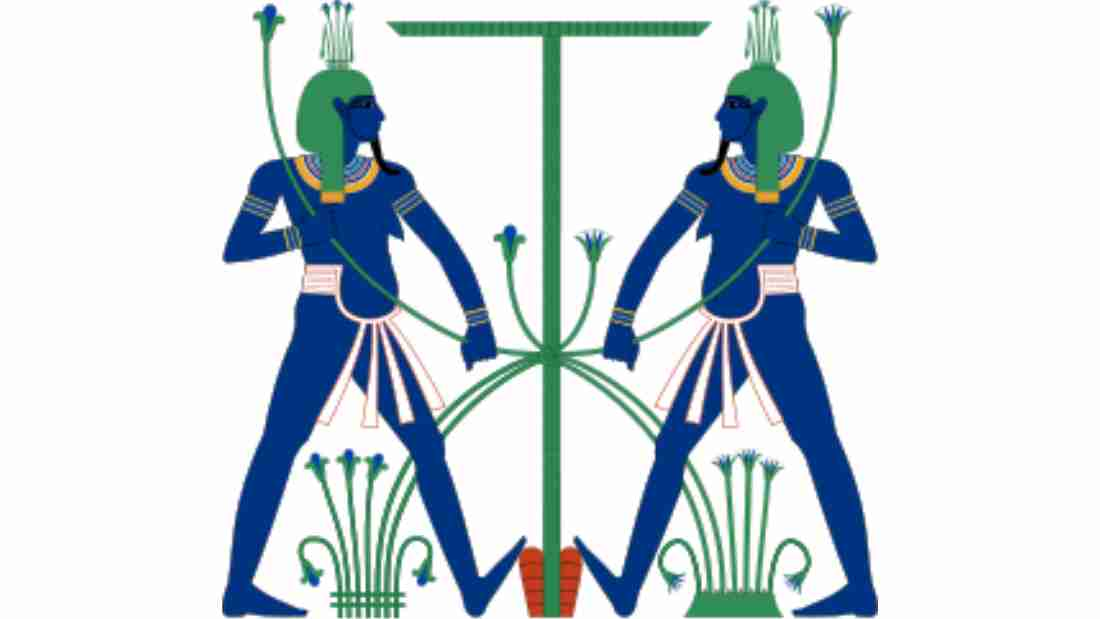Hapi, the Ancient Egyptian God of the Nile, is often depicted as a deity with full breasts and a rounded belly, embodying a striking duality of masculine and feminine characteristics.
This androgynous portrayal reflects the interconnectedness of the Upper and Lower Egypt regions, with the god’s physical form mirroring the union of the two lands.
Additionally, the presence of female and male attributes underscores Hapi’s association with both fertility and procreation, encapsulating the essence of life along the fertile banks of the Nile.

Hapi’s Role in Nile Cultivation
The significance of Hapi transcends mere symbolism, as the god personifies the annual flooding of the Nile River, which was integral to the agricultural prosperity of ancient Egypt.
As the lifeblood of the civilization, the Nile’s inundation brought nourishing silt and moisture to the land, ensuring bountiful harvests and sustaining the people of Egypt.
Hapi’s influence was acknowledged through rituals and offerings aimed at invoking the god’s favor for a successful flood season, further cementing the deity’s pivotal role in the sustenance of the ancient Egyptian society.

Symbolism and Worship
Depictions of the Egyptian god Hapi adorned numerous temples and religious sites, emphasizing the god’s importance in the religious practices of ancient Egypt.
The deity’s androgyny conveyed a sense of balance and harmony, aligning with the overarching theme of equilibrium prevalent in Egyptian cosmology.
Moreover, Hapi’s association with the flooding of the Nile extended beyond agricultural significance, embodying the cyclical nature of life, death, and rebirth.
Legacy and Influence
The legacy of the Ancient Egyptian god Hapi endures as a testament to the intricate belief systems and mythologies that shaped ancient Egyptian culture.
The god’s androgynous representation challenges conventional gender norms and serves as a poignant reminder of the diverse and multifaceted nature of ancient deities.
Posts About the Egyptian Pantheon of Gods
The Pantheon of Ancient Egyptian Gods – A Comprehensive Guide
The Wrath of Montu – The Mythology of the Egyptian War God
Egyptian God Ammit – The Eater of Hearts in Ancient Egyptian Mythology
The Nightly Journey of Khonsu – The Ancient Egyptian God of the Moon
Ihy – The Joyful Ancient Egyptian God of Music
Min – The Ancient Egyptian God of Fertility
The Egyptian God Anubis – His Evolution from Son of Ra to Protector of the Dead
Unraveling the Mysteries of Babi – The Ancient Egyptian Baboon God
Ra, the Egyptian Sun God – Symbolism and Significance in Ancient Egyptian Culture
Sobek: The Ferocious Crocodile God of Ancient Egypt
The Enigmatic Mythology of Horus, the Egyptian Sky God
The Egyptian God Set – Protector of the Desert and Lord of Conflict
The Ancient Egyptian God Medjed: The Guardian of Osiris and the Afterlife
Anput, the Wife and Female Version of Anubis
Selket – The Scorpion Crowned Egyptian Goddess
Shu – The Egyptian God of Air, Wind, Peace and Lions
Hapi the Androgynous Ancient Egyptian God of the Nile
The Egyptian Sky Goddess Nut: Myth and Symbolism
The 42 Laws of Maat: The Moral Principles of the Ancient Egyptians
The Ancient Egyptian Goddess Mut: The Maternal Power in Egyptian Mythology
The Warrior Goddess: Neith in Ancient Egyptian Mythology
The God Bes: The Joyful Dwarf Deity in Ancient Egyptian Culture
The Egyptian Gods of Love: Hathor and Isis in Ancient Egyptian Mythology
Confronting the Serpent: The God Apep, the Nemesis of Ra in Egyptian Myth

